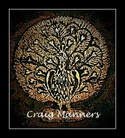|
By Eric Metaxas
An amazing find in Israel has set the archaeological world on its ear. And once again we see the veracity of biblical history. Five years ago, a team of archaeologists digging “at the foot of the southern part of the wall that surrounds Jerusalem’s Old City” came across a refuse dump dating to the eighth century before Christ. As the New York Times told its readers, it’s “an area rich in relics from the period of the first of two ancient Jewish temples.” Among their findings were thirty-three clay imprints or seals, known as bulla. These seals were catalogued and stored. It wasn’t until recently that these bulla were examined more closely, and what the closer examination revealed is rocking the archaeological world. One of the bulla bore the inscription “Belonging to Hezekiah (son of) Ahaz king of Judah.” That would be the Hezekiah of which the Bible says, “He trusted in the Lord, the God of Israel, so that there was none like him among all the kings of Judah after him, nor among those who were before him. For he held fast to the Lord. He did not depart from following him, but kept the commandments that the Lord commanded Moses” (2 Kings 18:5-6). As Eliat Mazar of Hebrew University told the Times, “It’s always a question, what are the real facts behind the biblical stories . . . Here we have a chance to get as close as possible to the person himself, to the king himself.” Breakpoint.org
0 Comments
Your comment will be posted after it is approved.
Leave a Reply. |
Craig MannersWhile much of what is written in this Blog may currently appear to be counter-cultural, given our post-truth culture, it is in no way counter-human beings. I am always for people no matter what they think, do, or may have done in their past. Where I put forward ideas or debate against certain ideology, behaviour, ideas, movements, politics, I remain very much on the side of the human beings even though I may be opposed to their worldview, behaviour and politics. Such opposition is generally out of concern for the ultimate consequences of such behaviour or ideas, especially for children. |
- Africa
- Reflections by Craig Manners
-
Articles by Craig Manners
- While We Wait by Craig Manners
- Written on our Hearts by Craig Manners
- Cure for Death by Craig Manners
- Perfect Justice, Perfect Mercy. Only God Could do This. By Craig Manners
- Authority By Craig Manners
- Creation and Providence by Craig Manners
- Forgiveness by Craig Manners
- All Things for Good by Craig Manners
- A Complete Education by Craig Manners
- Humans. Moral beings or not?
- Soviet Era Mass Conversion Therapy Mind Control Set to Control the West by Craig Manners
- On the Road to Adelong by Craig Manners >
- What is Christianity all about? >
- Note Pad
- To be Frank!
- A Cultural Revolution
- Wanted: Men who Understand the Times
- Grieved by the Grievance Virus
Contact Craig Manners
Copyright Craig Manners © 2016 to 2019
